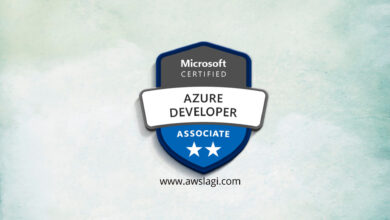A secure CMS for finance: why WordPress isn’t enough

In 2024, over 8,200 new vulnerabilities were discovered in the WordPress ecosystem, a 68% increase from the previous year. Over 96% of them originated from plugins. These alarming figures raise a serious question about whether popular platforms like WordPress are suitable for the financial sector. The following analysis explores how content management systems stand up to the demands of security and regulatory compliance.
New regulations and threats in the financial sector
European financial firms are facing a wave of regulations that are reshaping the standards for their IT systems. The Digital Operational Resilience Act (DORA) is at the forefront of this change. It is not just another piece of legislation; it fundamentally alters the landscape by treating ICT-related threats with the same gravity as other systemic risks in banking. Alongside DORA, the General Data Protection Regulation (GDPR) and the PSD2 and NIS2 directives form the key pillars of this new regulatory framework.
These rules change the role of company websites, elevating them from “marketing assets” to “critical ICT assets”. Any website that allows account access, processes applications, or collects data is subject to these strict new constraints. The guidelines focus on three areas: risk management, incident reporting, and resilience testing. Since these are strategic tasks, regulations like DORA place direct legal and financial responsibility on the management board. Consequently, the choice of content management technology must be made at the highest level.
A closer look at WordPress and its vulnerable architecture
When examined against the standards of the financial industry, WordPress reveals architectural and ecosystem weaknesses. These flaws have serious consequences and are a direct source of heightened security risk.
The inherent weakness of the plugin ecosystem
The real threat lies not in the core of WordPress itself, but in its model of extending functionality through plugins. Under the DORA regulation, a financial institution must maintain strict oversight of its third-party ICT service providers. The WordPress model, which relies on a vast and fragmented network of independent plugin developers, creates a formidable barrier to achieving compliance. An added danger comes from abandoned plugins, which may remain active on websites and function as dormant backdoors for which no security patches will ever be released.
The scale of the threat in 2024
The numbers speak for themselves, confirming a rapid escalation of dangers. In 2024 alone, 8,233 new loopholes were identified, averaging 22 new weaknesses every day. A striking 43% of them required no authentication, making them ideal targets for automated attacks. The impact has been significant, with over 500,000 infected websites reported. Mass campaigns, such as the Balada Injector, have compromised tens of thousands of sites by exploiting flaws in popular plugins. These vulnerabilities were not confined to obscure add-ons; they were found in components with millions of active installations.
A reactive approach to security clashes with regulation
The WordPress security model is fundamentally at odds with the goals of modern financial regulations. These rules demand a proactive approach to security, a standard that financial institutions must meet. WordPress, by contrast, relies on fixing vulnerabilities only after they have been discovered. Regulators could therefore interpret the use of the platform as being inconsistent with their preventative principles.
The myth of achieving compliance with plugins
It seems logical: if WordPress is missing a feature, just add a plugin. This is a dangerous myth. The idea that WordPress can be made compliant by installing extra plugins for firewalls, multi-factor authentication, or activity logging is flawed. This approach creates a complex and difficult-to-audit architecture, turning the process of proving compliance into an operational nightmare. Instead of a unified, built-in audit trail, auditors are faced with the task of aggregating data from multiple separate and incompatible systems.
The alternative: an architecture built on trust and compliance
Unlike the one-size-fits-all model of WordPress, bespoke solutions are designed from the ground up with a core principle in mind: the technology must conform to the strict norms of the financial sector, not the other way around. In such systems, the entire architecture is based on proactive protection, absolute control, and built-in regulatory compliance. This represents a fundamental shift in thinking. Instead of adapting a ready-made tool, the goal is to consciously build digital trust on a solid technological foundation.
A controlled and minimalist codebase
The main advantage of a custom-built system is its clean, purpose-built codebase. It contains only the elements essential for achieving business goals. This has a direct impact on security, as every extra line of code introduces potential risk. A smaller codebase means a smaller attack surface and a higher level of security. Furthermore, custom software is developed under a strictly managed software development life cycle (SDLC), which includes regular code reviews and penetration tests. Every change is tracked, tested, and approved, providing a level of control that is almost impossible to achieve in an ecosystem of thousands of independent plugins.
Integrated security by design
With custom-built solutions, protection is an integral part of the system’s core, not an external add-on. This approach eliminates conflicts between components, security gaps at integration points, and compatibility problems after updates. It also produces a consistent and reliable audit trail. For an auditor, a single, unified log is far more trustworthy and directly addresses the requirements of DORA.
Software designed for easy management and compliance
A system built from scratch provides full control over the software supply chain. Dependencies are chosen deliberately, and maintaining a Software Bill of Materials (SBOM) allows for an immediate response to any newly discovered vulnerability. Secure API integration, involving rigorous authentication, authorisation, and encryption, stands in stark contrast to the riskier model found in WordPress.
Gaining control, performance, and technological sovereignty
A bespoke platform gives an organisation complete sovereignty, freeing it from the limitations imposed by third-party vendors. This allows for performance and scalability optimisation, deep integration with the existing banking ecosystem, and full control over the update cycle.
A market example: FICO’s custom platform
The successful implementation of a custom CMS for global financial services at FICO, a global leader in predictive analytics, perfectly illustrates the benefits of a bespoke system. Operating in over 90 countries and managing content in nine languages, FICO needed a platform that could handle complex workflows for its global departments. It also required deep integration with Salesforce and Eloqua systems. Most importantly, as a service provider to the world’s largest banks, FICO had to meet the highest standards of security and regulatory compliance.
Analysing the total cost of ownership
The myth of WordPress being a low-cost solution needs to be dismissed. A true calculation of the total cost of ownership (TCO) must include expensive hosting, premium plugin subscriptions, and the constant labour costs associated with managing vulnerabilities.
The deciding factor, however, is the risk-adjusted TCO. The calculation is simple: risk-adjusted TCO equals the standard TCO plus the probability of a breach multiplied by its financial impact. For the WordPress ecosystem, both of these variables reach dangerously high levels. Data clearly shows that the likelihood of a breach for a WordPress-based portal is extremely high. The financial impact of such an event is catastrophic, consisting not only of direct costs but also reputational damage and huge fines, which under GDPR can be up to €20 million or 4% of global turnover. Investing in custom-built software should therefore be treated as a form of insurance; the higher initial cost is the price paid to minimise an existential risk.
Why the financial sector must choose dedicated systems
With its plugin-dependent architecture and uncontrolled ecosystem, WordPress presents an unacceptable threat to European financial institutions. Its reactive security model is fundamentally incompatible with the preventative requirements of modern regulations. The conclusion is clear: managers must start viewing their website’s content management system as critical infrastructure. Custom systems, built for integrity and control, provide the only solid foundation for building client trust and ensuring long-term resilience against growing threats and regulatory pressure.



